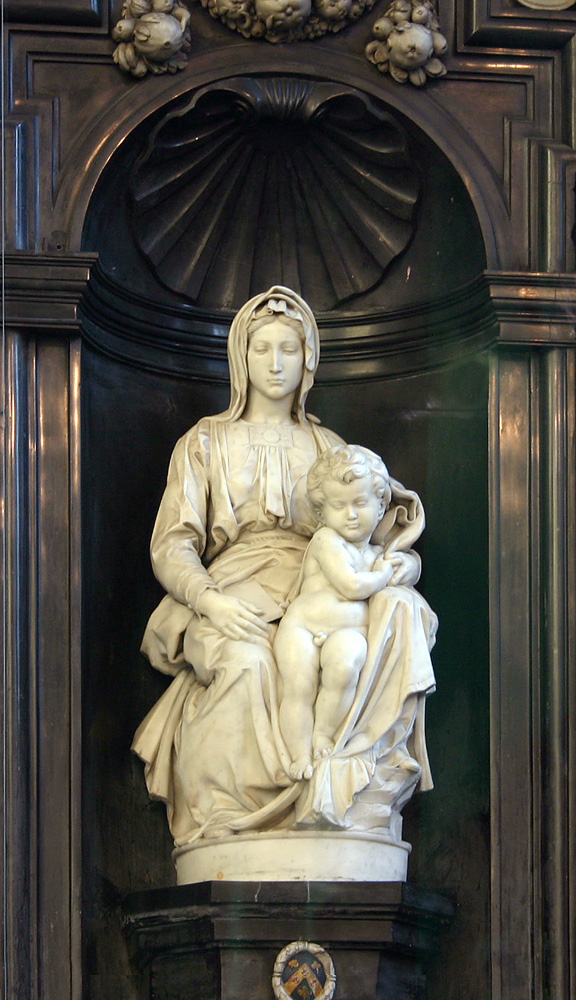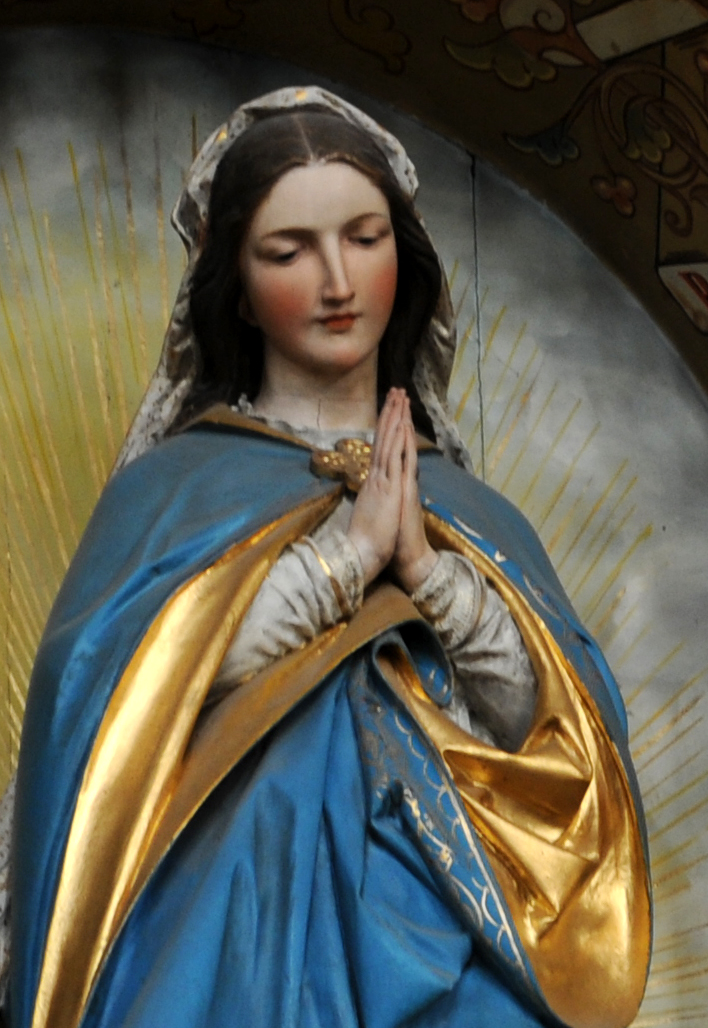 |
| Madonna and Child by Michelangelo via Wikimedia Commons |
"What do you see on the right side of the altar?" I asked.
"The Virgin Mary," he responded.
"This is certainly a Catholic church," I told him. (After all, I knew we weren't in the only Orthodox church of our community.)
It is perhaps ironic that Mary was one of the things that kept me from the Catholic Church in the earliest days of my spiritual awareness, but ultimately was also one of the people who attracted me to it. As a young teen, I had attended a Rosary for the mother of one of my friends. I was perplexed by the repetition of the prayer. "How sad," I thought, "They think they aren't being heard." Of course, it was also odd to me that anyone would pray to or through Mary. It was just not part of my understanding. Then, on an episode of the 1980s sitcom "Gimme a Break!" I heard Nell Carter sing the Bach-Gounod version of the Ave Maria. I had never heard anything so beautiful. Her character sang it to soothe and calm the other characters who had just experienced an earthquake. I began to understand the power of that simple prayer--the lyrics of which are drawn entirely from the Gospels. I learned the words, and I began to pray it every time I flew in a plane. It was a comfort to my anxiety during take off and landing.
Only later did a I come to focus more on Mary herself. As a great admirer of Pope John Paul II, I started to see her through his eyes. Having lost his own mother as a child, the Pope was a great devotee of Mary as the only mother he had. As a budding feminist or post-feminist in college, I thought, "Why shouldn't we have a spiritual mother as well as God the Father?"
I began to think, if I'm going to be a Christian, I should adopt the full breadth of Christianity, which I saw as Catholicism. And, if I were going to be a Catholic, I should fully embrace that too and become a Marian. So, now I am trying to learn more about her, about her role in the Gospels, in Salvation history, and in the growth and development of the Church.
I came to view Mary as the first Christian. Not only was she the first to understand and accept Christ's role, but her faith never wavered. Even when the disciples ran away, even when Peter three times denied Jesus after swearing that he was prepared to die with Him, even as they panicked over the empty tomb, and fretted in the Upper Room, Mary's faith never wavered. She gave herself, body and soul, to God in a way that no one else ever has.
 |
| Annunciation by Fra Angelico via Wikimedia Commons |
 |
| Mary by Josef Moroder via Wikimedia Commons |
Her instruction to the waiters is the same as her instruction to all of the children of God: "Do as He says." That is hardly a passive role. It is the most active role possible. By her word and by her example, we are told to follow Him with full faith despite any troubles that may befall us, because as the angel told her, all things are possible with Him.
No comments:
Post a Comment